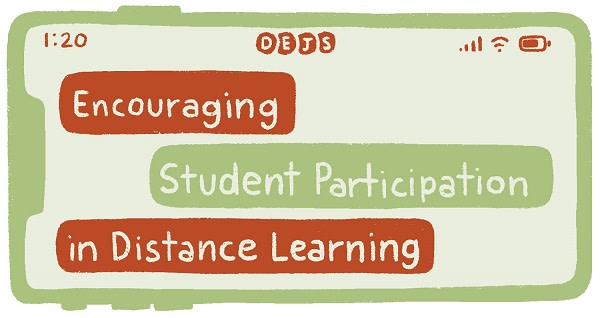To address student engagement remotely, choose resources that are authentic and relevant, and provide multiple ways for students to participate, including discussion forums with a combination of audio, text, and video responses.
To encourage student participation, set norms and expectations for student work submission; posting and commenting in discussion forums; and using video conferencing for whole-class, small-group, and one-on-one meetings.
4 Ways to Increase Participation in Distance Learning
Hold office hours for individual students to sign up for a one-on-one slot.
Establish breakouts so small groups of students can participate in a discussion
Have a plan for checking in with students individually to offer support and encouragement.
Provide high-interest resources and relevant connections that make students want to check in more frequently.
Using Interest Surveys
An interest survey is a great way to get to know your students: the data you gather can help you plan more engaging distance learning. Send out an interest survey at the beginning of a term and again halfway through the school year or extended term with questions such as the following:
How do you like to learn (e.g., watching videos, reading articles, listening to podcasts)?
What questions do you have about [our topic]?
Do you like working in groups, independently, or both?
What type of projects do you like to do (e.g., making movies, recording a podcast, writing an essay, building a diagram)?
Facilitating Class Discussion
In a distance learning environment, discussion takes many forms. It can be live, teacher-moderated text, audio, and video exchanges during synchronous instruction, or ongoing discussion threads where students can add text, audio, and video responses to both teacher-provided prompts and classmates' previous comments. In addition to keeping the discussion focused and relevant, your facilitation responsibilities include reiterating the standards for discussion contributions, ensuring that the discussion process is clear, and confirming that students know how to use the technology involved.
For example, the participation guidelines for a live discussion might be these:
Post your question or comment in the chat space.
Wait for the designated discussion leader to present the question to the group.
Keep comments relevant and respectful.
Taking Virtual Field Trips
Live or prerecorded virtual field trips can transport students to a new place, providing context for an upcoming lesson or extending or deepening a learning activity.
Live: You might connect your class in a video conferencing tool with a park ranger, museum docent, or subject matter expert. They can take students on a tour of a space using their own mobile device or share their screen as they talk about a place and show pictures. Live virtual field trips provide an opportunity for students to ask questions and respond in real time.
Prerecorded: These virtual field trips are ones students can take on their own and at a time that works for them. It might mean following a link to an interactive map, a 360° panorama, or even an expert-led video tour. To ensure lesson connection, you can pair these experiences with a set of questions for student responses or reflections in a discussion forum.
This is an excerpt from the Distance Learning Essentials Quick Reference Guide (ASCD, 2020). Visit ASCD's Quick Reference Guides page to access more tips.









